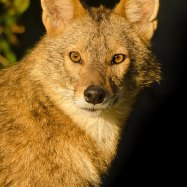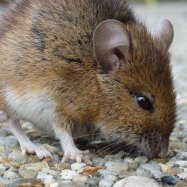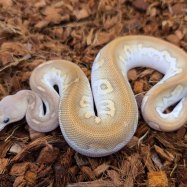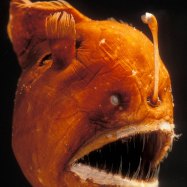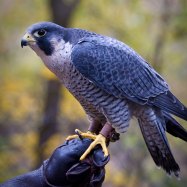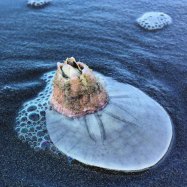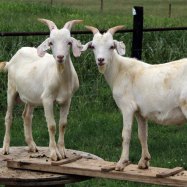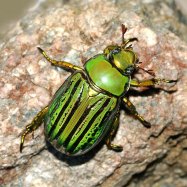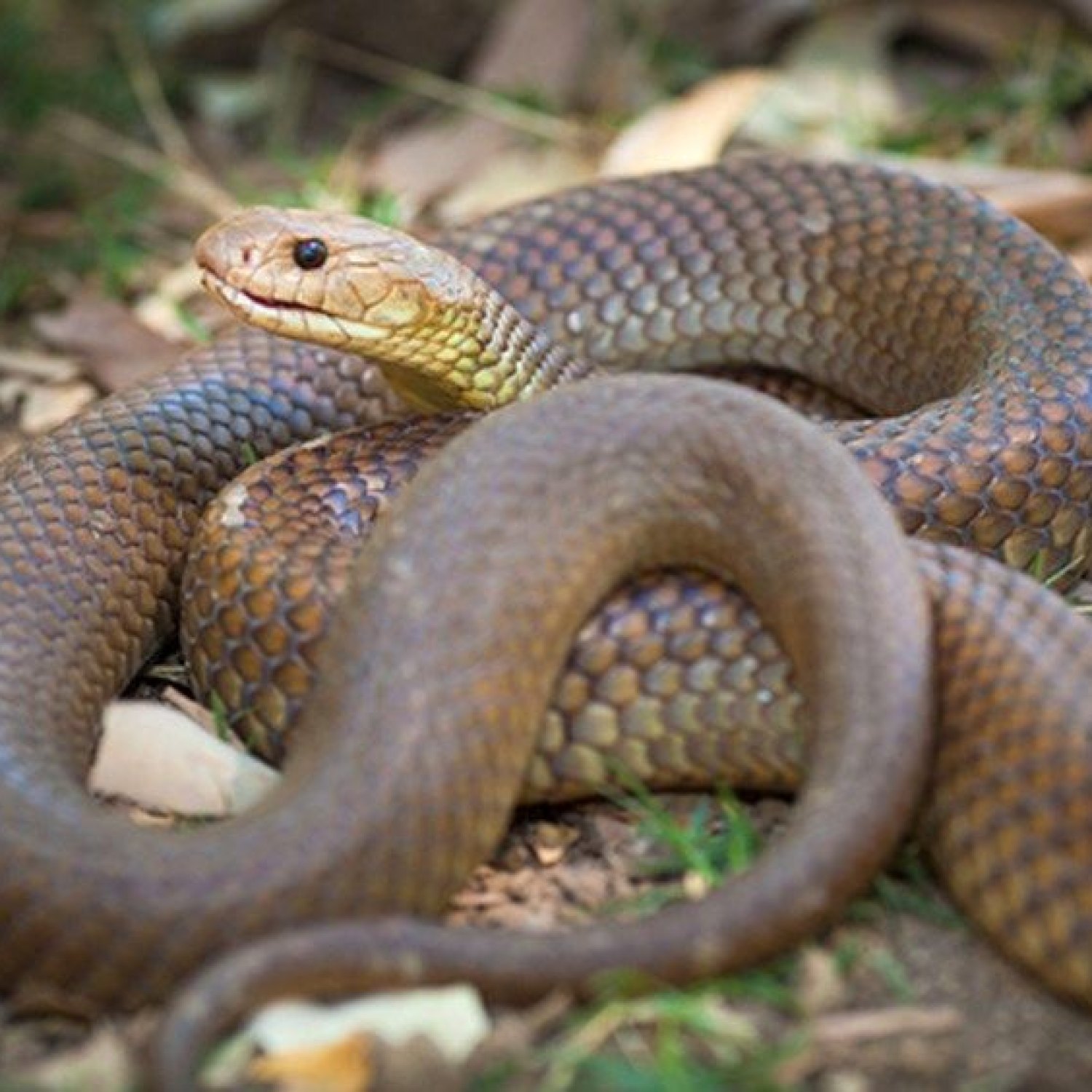
Mulga Snake
Mulga Snakes are moderately sized venomous snakes. They typically grow between 1.5 to 2.5 meters (5 to 8 feet) in length, although larger individuals can reach up to 3 meters (10 feet).
Meet the Mulga Snake, a venomous Australian native. This moderate-sized snake grows up to 8 feet in length and can be found in various parts of Australia. With a slender body and distinct neck, the mulga snake is a fascinating animal to learn about. #MulgaSnake #AustralianWildlife #Elapidae
Animal Details Summary:
Common Name: Mulga Snake
Kingdom: Animalia
Habitat: Mulga Snakes are found in the arid and semi-arid regions of Australia, particularly in the central parts of the continent. They inhabit a wide range of habitats including deserts, shrublands, grasslands, woodlands, and rocky areas.
The Mighty Mulga Snake: A Lethal Beauty of the Australian Outback
Australia is known for its diverse and unique wildlife, and one species that stands out in its beauty and deadliness is the Mulga Snake, scientifically known as Pseudechis australis. This reptile, commonly referred to as the Mulga Snake, is a member of the Elapidae family and can be found in the arid and semi-arid regions of Australia. With its striking appearance and venomous nature, the Mulga Snake has captured the fascination of many and has become a significant player in the ecosystem of the Australian outback.The Anatomy and Characteristics of the Mulga Snake
The Mulga Snake is a member of the kingdom Animalia and the phylum Chordata, belonging to the class Reptilia and order Squamata Mulga Snake. This snake species is known for its highly variable coloration, with individuals varying from reddish-brown, dark brown, olive, and almost black. They often have lighter bands or spots along the body, giving them a striking appearance. The belly is usually cream or yellowish, creating a contrast with the darker shades of their body.The body shape of Mulga Snakes is slender and elongated, with a distinct neck and a relatively short tail compared to their body length. The head of the Mulga Snake is relatively narrow and slightly flattened, with a pointed snout. Their eyes have vertical pupils, giving them a menacing look. On average, Mulga Snakes grow between 1.5 to 2.5 meters (5 to 8 feet) in length, although larger individuals can reach up to 3 meters (10 feet) Massasauga. This makes them moderately sized venomous snakes, with a body that is perfectly adapted for their hunting techniques and life in the harsh Australian outback.
Habitat and Distribution
As their name suggests, Mulga Snakes are commonly found in mulga woodlands and scrublands, which are prevalent in the central parts of Australia. They also inhabit other arid and semi-arid habitats, including deserts, shrublands, grasslands, and rocky areas. This versatile species can adapt to various environments, allowing them to have a wide distribution throughout Australia. They can be found in Western Australia, Northern Territory, South Australia, and Queensland, and various regions, including the Pilbara, Kimberley, Barkly Tableland, Simpson Desert, and Flinders Ranges.Feeding Behavior
Like most snakes, Mulgas are carnivorous and primarily feed on small mammals, birds, lizards, and other snakes. They are also known to eat large insects and even eggs. Mulga snakes are adept hunters and use their excellent sense of smell and heat-detecting pits to locate their prey. They are also skilled climbers, allowing them to catch prey in trees and shrubs. Once they have captured their prey, they use their venom to immobilize and digest it, as they are unable to chew and swallow their food whole.Dangerous Beauty: Venom and Lethality
Mulga Snakes are venomous, and their bite can be lethal to humans. The venom of the Mulga Snake contains powerful neurotoxins, which can paralyze the nervous system, leading to respiratory failure if left untreated. However, despite their venomous nature, Mulga Snakes are considered relatively docile and will only strike if threatened or cornered. They are known to give off warning signs, such as hissing and striking with their mouths closed, before resorting to a full-fledged bite. As a result, most bites occur when people accidentally step on them, highlighting the need for caution when exploring their habitat.The Benefits of Mulgas to the Ecosystem
Despite their deadly nature, Mulga Snakes play a vital role in the ecosystem of the Australian outback. As apex predators, they help control the population of their prey, balancing the ecosystem and preventing overgrazing and other ecological imbalances. They also act as scavengers, feeding on dead animals, and helping to clean up the environment. Additionally, the toxicity of their venom has made them an important subject of scientific research and has led to the development of anti-venom for snake bites.The Importance of Conservation Efforts
The Mulga Snake is a significant and fascinating part of Australian wildlife, and conservation efforts need to be in place to protect their population. Human activities such as land clearing, overgrazing, and road fatalities have affected their habitat and population, making them vulnerable to extinction. The loss of Mulga Snakes could have a considerable impact on the ecosystem, causing imbalances and disrupting the food chain. Therefore, it is crucial to raise awareness about the importance of these snakes and the need for responsible interactions with them.Conclusion
In conclusion, the Mulga Snake, scientifically known as Pseudechis australis, is a beautiful and lethal species of snake found in the arid and semi-arid regions of Australia. With their striking appearance, versatile habitat, and lethal venom, they have captured the fascination of many and play a vital role in the ecosystem of the Australian outback. While they may seem frightening to some, their importance to the ecosystem highlights the need for responsible conservation efforts to protect this unique species. As we continue to explore and learn about the diverse flora and fauna of Australia, let us not forget to respect and appreciate the mighty Mulga Snake and its place in the natural world.

Mulga Snake
Animal Details Mulga Snake - Scientific Name: Pseudechis australis
- Category: Animals M
- Scientific Name: Pseudechis australis
- Common Name: Mulga Snake
- Kingdom: Animalia
- Phylum: Chordata
- Class: Reptilia
- Order: Squamata
- Family: Elapidae
- Habitat: Mulga Snakes are found in the arid and semi-arid regions of Australia, particularly in the central parts of the continent. They inhabit a wide range of habitats including deserts, shrublands, grasslands, woodlands, and rocky areas.
- Feeding Method: Carnivorous
- Geographical Distribution: Mulga Snakes are endemic to Australia and are found across most of the mainland. They are commonly found in Western Australia, Northern Territory, South Australia, and Queensland.
- Country of Origin: Australia
- Location: Mulga Snakes can be found in various parts of Australia, including the Pilbara, Kimberley, Barkly Tableland, Simpson Desert, and Flinders Ranges regions.
- Animal Coloration: Mulga Snakes have a highly variable coloration. They can be reddish-brown, dark brown, olive, or almost black. They often have lighter bands or spots along the body. The belly is usually cream or yellowish.
- Body Shape: Mulga Snakes have a slender and elongated body with a distinct neck. They have a relatively short tail compared to their body length. The head is relatively narrow and slightly flattened.
- Length: Mulga Snakes are moderately sized venomous snakes. They typically grow between 1.5 to 2.5 meters (5 to 8 feet) in length, although larger individuals can reach up to 3 meters (10 feet).
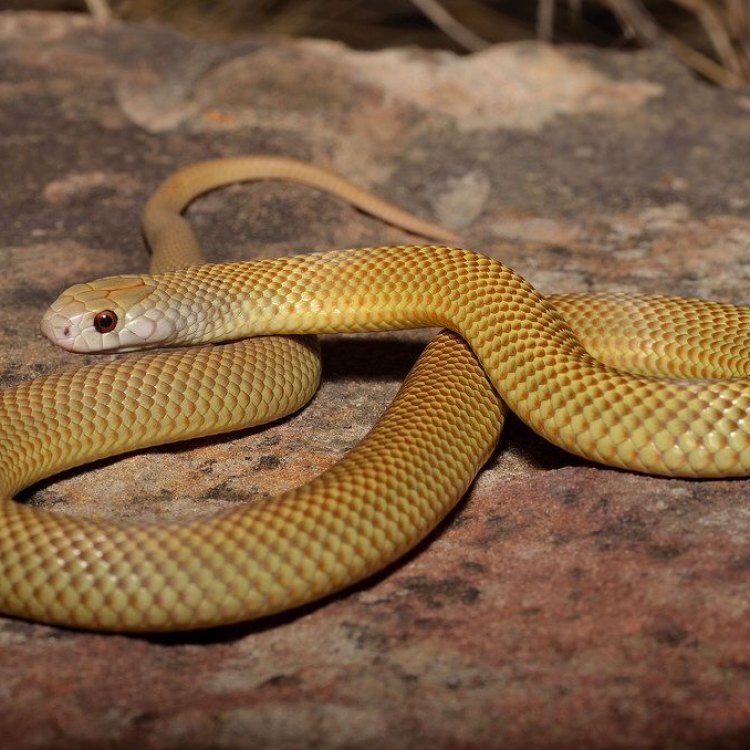
Mulga Snake
- Adult Size: The average adult size of a Mulga Snake is around 2 meters (6.5 feet). However, some individuals can grow up to 3 meters (10 feet) in length.
- Average Lifespan: The average lifespan of Mulga Snakes is estimated to be around 20-25 years in the wild. However, some individuals have been known to live up to 30 years.
- Reproduction: Mulga Snakes are oviparous, meaning they lay eggs. Females lay clutches of 5-20 eggs, which are typically laid in sandy or soft soil. The eggs take around 2-3 months to hatch.
- Reproductive Behavior: During the breeding season, male Mulga Snakes engage in combat to compete for mates. They will wrestle and entwine their bodies, attempting to pin each other down. The winner then mates with the female.
- Sound or Call: Mulga Snakes are usually silent, but they can make a hissing sound if threatened or disturbed. They can also produce a rattling sound by vibrating their tail rapidly against the ground or vegetation.
- Migration Pattern: Mulga Snakes are generally sedentary and do not exhibit long-distance migrations. However, they may move short distances in search of food, water, or suitable mates.
- Social Groups: Mulga Snakes are usually solitary animals and do not form social groups. However, during the breeding season, males actively seek out females for mating.
- Behavior: Mulga Snakes are primarily nocturnal, meaning they are most active at night. During the day, they seek shelter in rock crevices, hollow logs, or burrows to avoid the extreme heat. They are generally shy and will try to escape if threatened, but they can become defensive and display aggression if cornered or provoked.
- Threats: Mulga Snakes face various threats in their natural habitat. They are frequently killed by humans out of fear or misunderstanding. They may also be impacted by habitat loss, land degradation, and the spread of invasive species. Climate change and wildfires can also pose threats to their survival.
- Conservation Status: The Mulga Snake is listed as a species of Least Concern by the International Union for Conservation of Nature (IUCN). However, certain populations may be at risk due to habitat loss and other threats.
- Impact on Ecosystem: As predators, Mulga Snakes play an important role in controlling populations of small mammals and reptiles. They help maintain the balance of ecosystems by controlling the populations of their prey species.
- Human Use: Mulga Snakes are venomous and considered dangerous to humans. They are protected under Australian law, and it is illegal to harm or kill them. However, they are sometimes encountered in snake-handling demonstrations or kept in captivity by licensed individuals.
- Distinctive Features: Mulga Snakes can be identified by their slender and elongated body, distinct neck, and relatively short tail. They have a narrow and slightly flattened head. Their coloration and patterning can vary, but they often have lighter bands or spots along the body.
- Interesting Facts: 1. Mulga Snakes are one of the largest venomous snakes in Australia. 2. They are capable climbers and can scale low vegetation and rocky outcrops. 3. Mulga Snakes are highly adaptable and can survive in a range of arid habitats. 4. They are expert ambush predators, using their excellent camouflage to hide and ambush their prey. 5. Mulga Snakes are not considered highly aggressive toward humans and will usually try to escape rather than engage in a confrontation.
- Predator: Mulga Snakes are top predators in their ecosystems and have few natural predators. However, they may occasionally be preyed upon by large birds of prey, other snakes, or carnivorous mammals.
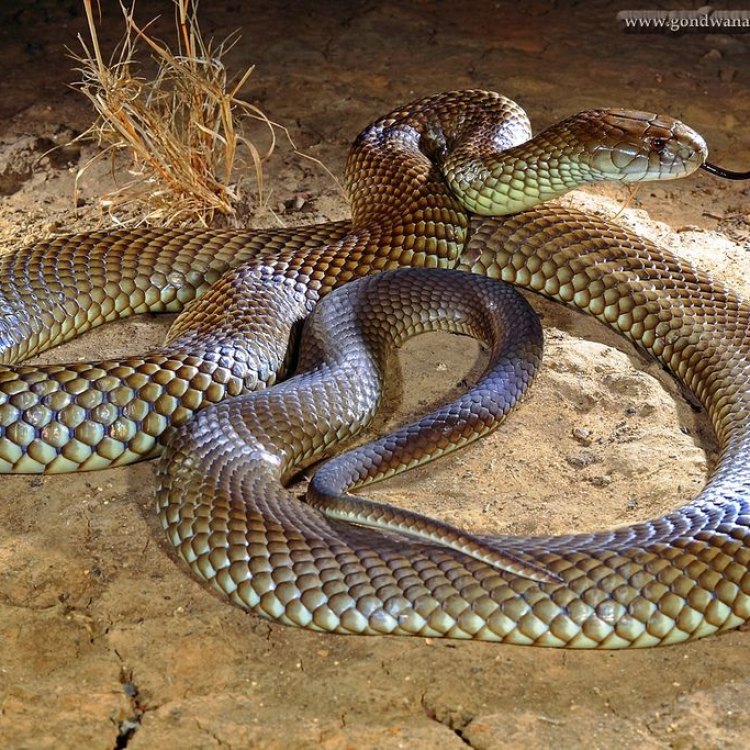
Pseudechis australis
The Mysterious Mulga Snake: A Master of Adaptation and Survival
There are few creatures in the world that inspire fear and intrigue quite like the Mulga Snake. This highly adaptable and elusive serpent is a master of survival, thriving in some of the harshest and most arid regions of Australia. With its distinct features and interesting behaviors, the Mulga Snake has captured the imagination of people for centuries. In this article, we will delve into the unique features and characteristics of this fascinating reptile, and uncover the truth behind some common misconceptions PeaceOfAnimals.Com.Unraveling the Mysteries of the Mulga Snake
The Mulga Snake, also known as King Brown Snake or Pilbara Cobra, is a large and powerful venomous snake found in the arid and semi-arid regions of Australia. It belongs to the Elapidae family, which includes some of the world's most dangerous snakes such as King Cobras and Black Mambas. However, the Mulga Snake, despite being venomous, is relatively docile and non-threatening towards humans. In fact, it usually prefers to avoid any confrontation and will only strike as a last resort.Size and Lifespan
One of the most striking features of the Mulga Snake is its size. While the average adult size is around 2 meters (6.5 feet), some individuals can grow up to an impressive 3 meters (10 feet) in length. This makes the Mulga Snake one of the largest venomous snakes in Australia. It has a slender and elongated body, with a distinct neck and a relatively short tail Moonglow Boa. Its head is narrow and slightly flattened, and its eyes are small and can be difficult to spot.As for their lifespan, Mulga Snakes can live for an estimated 20-25 years in the wild, but some individuals have been known to live up to 30 years. This is a relatively impressive lifespan for a reptile, considering the harsh conditions in which they live.
Reproduction and Breeding Behavior
Mulga Snakes are oviparous, meaning they lay eggs. Female Mulga Snakes typically lay clutches of 5-20 eggs, which are usually laid in sandy or soft soil. The eggs take around 2-3 months to hatch, with the timing depending on environmental conditions such as temperature and humidity.During the breeding season, which usually occurs in spring and summer, male Mulga Snakes engage in combat to compete for mates. This is a fascinating behavior to observe, as male Mulga Snakes will wrestle and entwine their bodies, attempting to pin each other down. The winner then mates with the female, and the female will lay her eggs in her chosen nesting spot.
Sound or Call
Mulga Snakes are generally silent creatures, but they can make a hissing sound if threatened or disturbed. This hissing sound is created by the snake forcefully expelling air through its mouth, creating a loud and intimidating noise. Additionally, Mulga Snakes can also produce a rattling sound by vibrating their tail rapidly against the ground or vegetation. This behavior is similar to rattlesnakes and is meant to be a warning to potential predators.Migration and Social Behavior
One interesting aspect of Mulga Snakes is their migration pattern. Generally, these snakes are sedentary and do not exhibit long-distance migrations. However, they may move short distances in search of food, water, or suitable mates. Mulga Snakes are primarily solitary animals and do not form social groups. However, during the breeding season, male Mulga Snakes actively seek out females for mating.Nocturnal Behavior and Habitat
One of the reasons why the Mulga Snake is such a mysterious creature is its primarily nocturnal behavior. These snakes are most active at night, when temperatures are cooler, and prey are more abundant. During the day, they seek shelter in rock crevices, hollow logs, or burrows to avoid the extreme heat. This makes them difficult to spot and adds to their elusive nature.Mulga Snakes are highly adaptable and can survive in a range of arid habitats, including desert, grasslands, and scrubs. They are highly skilled at utilizing their surroundings for shelter and ambush. Their excellent camouflage, combined with their ambush tactics, make them experts at capturing prey.
Threats to Survival
While the Mulga Snake may seem like an expert survivor, it still faces numerous threats in its natural habitat. One major threat to their survival is human intervention. Due to fear and misunderstanding, Mulga Snakes are often killed by humans when encountered. Additionally, habitat loss and degradation, as well as the spread of invasive species, also pose significant threats. Climate change and wildfires can also impact their survival.Conservation Status and Role in Ecosystem
The Mulga Snake is listed as a species of Least Concern by the International Union for Conservation of Nature (IUCN). This means that their populations are currently stable. However, it is essential to note that certain populations of Mulga Snakes may be at risk of decline due to the aforementioned threats.As predators, Mulga Snakes play an important role in maintaining the balance of ecosystems. They help control populations of small mammals and reptiles, which can have a significant impact on their habitats. Without the presence of Mulga Snakes, these populations may grow out of control, leading to imbalances and potentially harmful consequences for the ecosystem.
Human Use and Misconceptions
Due to their venomous nature, Mulga Snakes are considered dangerous to humans. They are protected under Australian law, and it is illegal to harm or kill them. However, these snakes are sometimes encountered in snake-handling demonstrations or kept in captivity by licensed individuals. While these activities can educate people about these fascinating creatures, it is essential to remember that Mulga Snakes are wild animals and should be respected and treated with caution.Distinctive Features and Interesting Facts
Mulga Snakes can be identified by their unique features, including their slender and elongated body, distinct neck, and relatively short tail. Their coloration and patterning can vary, with some individuals having lighter bands or spots along their body.Moreover, here are five interesting facts about Mulga Snakes that will surely fascinate you:
1. Mulga Snakes are one of the largest venomous snakes in Australia.
2. They are expert climbers, and can scale low vegetation and rocky outcrops.
3. Mulga Snakes are highly adaptable and can survive in a range of arid habitats.
4. They are expert ambush predators, using their excellent camouflage to hide and ambush their prey.
5. Despite their venomous nature, Mulga Snakes are not considered highly aggressive towards humans and will usually try to escape rather than engage in a confrontation.
Predators of the Mulga Snake
As top predators in their ecosystems, Mulga Snakes have few natural predators. However, they may occasionally be preyed upon by large birds of prey, other snakes, or carnivorous mammals. Their venom also acts as a defense mechanism against potential predators, making them a formidable and respected presence in their habitats.In conclusion
The Mulga Snake is a mysterious and impressive creature, with its unique characteristics and intriguing behaviors. While it may inspire fear in some, it is a vital and fascinating part of the Australian ecosystem. As humans, it is our responsibility to appreciate and protect these creatures, rather than demonizing them out of fear. With proper education and understanding, we can learn to coexist with these magnificent snakes and ensure their continued survival in the wild.

The Mighty Mulga Snake: A Lethal Beauty of the Australian Outback
Disclaimer: The content provided is for informational purposes only. We cannot guarantee the accuracy of the information on this page 100%. All information provided here may change without prior notice.


